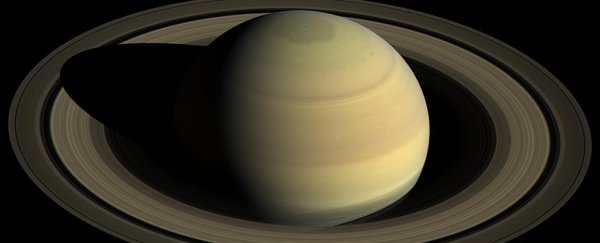The Cassini probe is currently doing a fine job of studying Saturn for us, but there are plans to send more missions out to the ringed planet in the future, with spacecraft that will be on the lookout for alien lifeforms.
Astronomers think two of the planet's moons – Titan and Enceladus – could possibly support life, and they want to send some of our most high-tech monitoring equipment to Saturn to find out.
To get things started, two proposals were presented at the American Geophysical Union (AGU) conference last week.
The first is the Enceladus Life Finder (ELF) project, backed by NASA, and then there's the Explorer of Enceladus and Titan (E2T) project, supported by both NASA and the European Space Agency.
Right now, both teams are looking for funding to make their proposals a reality, and if they can secure the money, there's no telling what kind of scientific discoveries we could make in the near future.
"The biggest hope for ELF is to fully characterise the habitability of Enceladus's ocean," ELF co-proposer Linda Spilker told Maddie Stone at Gizmodo.
"I would like to know if the Enceladus ocean can support life, and better yet, to find evidence for that life."
The proposed ELF flight plan would see it swoop down to a low altitude of around 50 kilometres (31 miles) above the surface of Enceladus's south pole.
From there, it would take samples of the ocean water that gets spewed into the air through cracks in the icy surface.
Two mass spectrometers, which analyse chemical mixes, would then scan these geysers for signs of life, including hydrogen gas (a common energy source), amino acids, and carbon isotopes, which are often found in certain patterns when microscopic life is present.
Meanwhile, E2T researchers want to take a closer look at both Enceladus and Titan, which they say are "prime environments in which to investigate the conditions for the emergence of life and the habitability potential of ocean worlds".
 Artist's impression of the plumes on Enceladus. Credit: NASA/JPL
Artist's impression of the plumes on Enceladus. Credit: NASA/JPL
Just like ELF, E2T would fly across Enceladus's south polar plumes and take readings from the seawater – that's something Cassini has already done, but the new probes would be carrying more advanced instruments running a more detailed analysis.
In other words, the ELF and E2T probes can run scans beyond the capabilities of Cassini, which launched back in 1997, and as such contains technology that's nearly 20 years old now.
The E2T spacecraft would also be able to take high-resolution photos of the surface of Enceladus.
After that, it would be on to Titan, for 17 passes through the moon's atmosphere at altitudes of between 900 and 1,500 kilometres (560 to 930 miles), with air samples collected and analysed along the way.
The high-resolution camera would again be called into action to take as many snaps of Titan's surface as possible.
At this stage, tt's not clear if either or both of these planned projects will get the go-ahead, but they show a strong interest from scientists in probing the secrets of Titan and Enceladus – moons that could tell us much more about life in the outer Universe.
"[Enceladus] could be the place where we find out if life had a second genesis in our own solar system," Cornell University's Jonathan Lunine told the AGU.
"We must go back."
